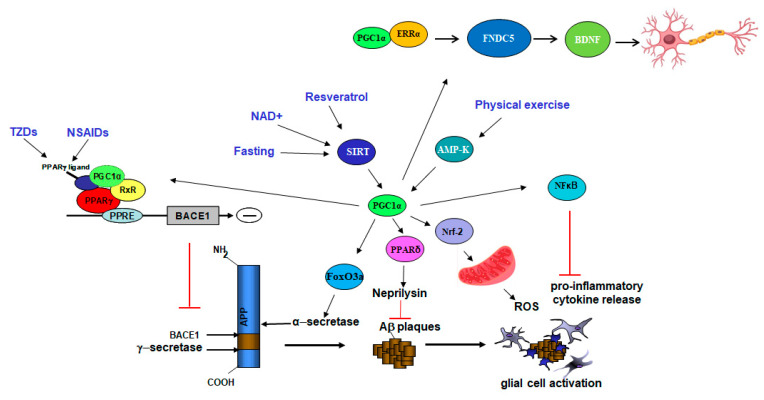Figure 1.
Model showing the mechanistic effects of PGC1α as therapy in AD. Activation of PGC1α via interventions (in blue) such as exercise, fasting, or treatments (genetic and pharmacological) can lead to neuroprotection in AD by targeting different transcriptional pathways. Binding to PPARγ results in changes in the processing of the amyloid-precursor protein (APP) by reducing BACE1 transcription and Aβ generation. PGC1α can affect Aβ degradation by increasing neprilysin activity. In addition, the expression of neurotrophic molecules, such as sAPPα (by increasing α-secretase expression) and BDNF, are enhanced by PGC1α. Lastly, the levels of pro-inflammatory cytokines and reactive oxygen species (ROS) are also modulated by PGC1α. Adapted from Katsouri et al., 2016 (reference [38]).

